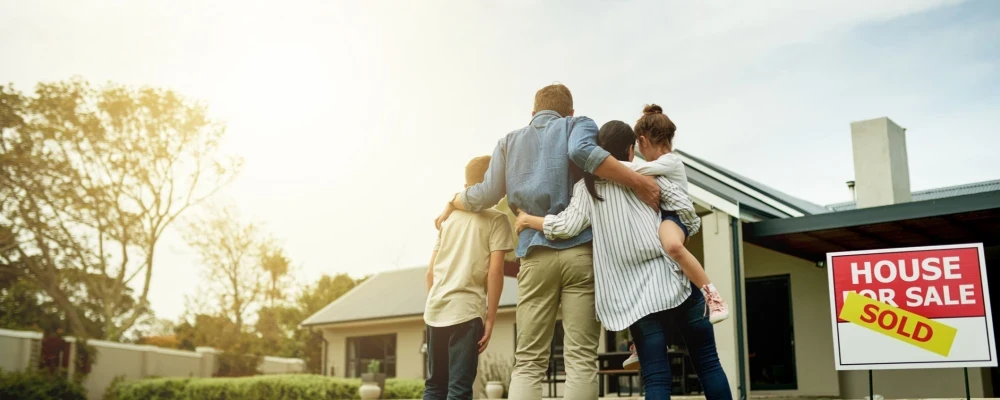Buying A House In A Disaster Area
Make sure you are aware of the risks when buying a house in a disaster area. Learn the steps to take to protect the home and get the appropriate insurance.
Our content follows strict guidelines for editorial accuracy and integrity. Learn about our and how we make money.
A disaster area is an area recently struck by a major disaster such as a hurricane, flood, or wildfire. The designation, "disaster area," is an official declaration, and made so that people can receive aid from the government.
Prospective homebuyers may be interested in homes located in disaster areas for several reasons. For example, perhaps they lost their home in a recent disaster and need a new place. Maybe they are in the military and must relocate to the area. Alternatively, they may like the area and are willing to accept the risk of a disaster affecting their life.
Whatever the case, proceed cautiously when buying a house in a disaster area. Make sure you are aware of the potential risks and the steps you can take to protect the home. It would help if you also got the appropriate insurance.
If You Already Lived in the Area and Lost Your Home
For homebuyers purchasing a new home after losing a previous one, the government has the Section 203(h) program that may be able to help. It enables the Department of Housing and Urban Development (HUD) to insure mortgages for people who lost their homes in presidentially declared disaster areas.
No down payment is necessary, but you must apply within one year of the disaster declaration. HUD sets limits on the mortgage amount it insures, and the program serves low-income and moderate-income households.
Credit scores, income requirements, and other criteria vary depending on the individual lenders, but some lenders give out these loans to borrowers with credit scores of 580. You can no longer have a mortgage on your previous home, or you must have filed an insurance claim on the house.
What to Do Before You Buy
The Federal Emergency Management Agency has several risk assessment tools on its website. It's a good idea to assess your risk even if you're purchasing a property in an area that may not be a disaster zone.
You never know what's not being shared with you. Many homeowners don't know their home is in a flood plain or at risk of wildfires. The FEMA tools may not necessarily help with that, but they are a starting point—at least for floods, earthquakes, hurricane winds, and tsunamis. You'll get information on potential physical damage, economic loss, and social impact.
Keep the following things in mind:
The older the house, the riskier your purchase may be. Newer homes usually have to adhere to recent safety codes and regulations.
Hire a home inspector to go over the house to ensure it meets building codes.
Look for safety upgrades that may already be in place (for example, storm panels and shutters).
Your insurer may require certain safety features.
Have a place to go (and possibly stay long term) in case your home is damaged or destroyed in a disaster.
Get Appropriate Home Insurance Coverage
Insurance coverage in disaster areas can be tricky. Standard homeowners insurance generally covers the structure of the home, your belongings, additional living expenses, and liability.
Damage from disasters such as fire, lightning, tornadoes, hurricane, and hail may be covered. You likely need additional protection against earthquakes and floods (landslides, mudslides, sinkholes, and the like too).
Check your standard policy for excluded perils
Some private insurers offer flood insurance, or you can purchase it from the National Flood Insurance Program. NFIP has done its risk assessments area by area, considering factors such as coastal rainfall and hurricane surges.
However, there will be a shift starting in October 2020 to assessing individual properties for risk. NFIP will also focus on shifting more of the insurance "burden" to the private market. Insurance may be harder to get after this time and perhaps costlier.
NFIP insurance currently caps coverage at $250,000. If your home costs more than that and you want protection for its entire value, private insurers should be able to help. Your mortgage lender will most likely require you to have most, if not all, of your home value insured (the amount left over after your down payment).
Paying for all this coverage can be pricey, so plan for these costs, and compare quotes from multiple insurers. Budget more for your home purchase and for ongoing expenses such as insurance than you think you need. Buy your policy right away, as there is usually a waiting period associated with certain perils.
If earthquakes are your primary concern, your deductible will probably be higher than those in traditional homeowners policies. Expect it to be about 5% to 15% of the policy limit. In California, the California Earthquake Authority can help cover your home. Like flood insurance, earthquake insurance can be pricey.
What about wildfires? A standard homeowner's policy should cover most or all of what could happen, but do check the limits and terms of your policy.
Here's a guide to help you determine how much insurance coverage is appropriate. Consider factors such as the value of your possessions and whether your home might have unique features that cannot be repaired or replaced. If you ever need to make a claim, this outline from the Insurance Information institute gives tips and tells you what to expect.
In general, you need to keep making mortgage payments even if you are not living in the home. Insurance should cover most or all of your relocation costs, and your lender may make accommodations in the case of a disaster declaration. Insurance money can also help pay off a mortgage, so file as soon as realistically possible.